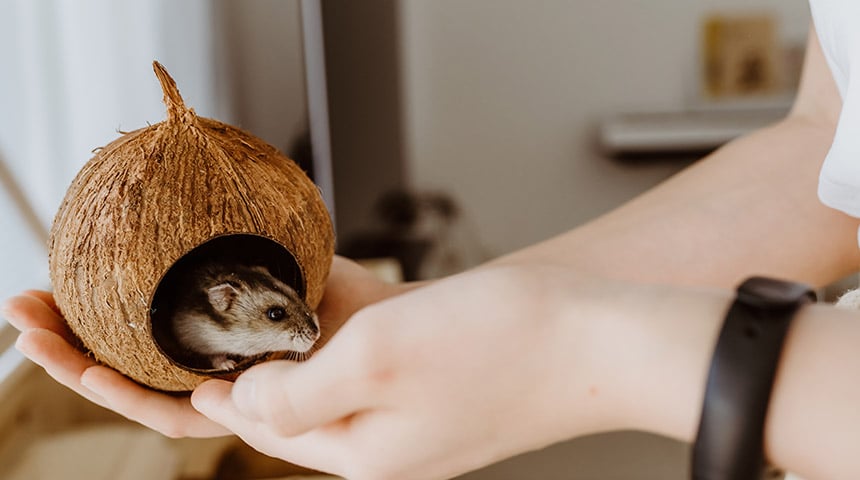
Hamsters are small mammals that belongs to the rodent family. They’re nocturnal animals, so it’s quite normal for them to spend a lot of time sleeping during the day and being active at night! They are usually solitary animals. It is generally recommended to avoid contact between individuals over 6 months of age, to avoid the risk of fights that can lead to serious injuries, especially from bites.
In the wild, these small animals live in burrows made of tunnels they’ve dug themselves. They are also excellent climbers. At home, it will be essential to provide them with a spacious, stimulating environment in which they can run, climb, dig, and hide. Materials such as tissues or cotton balls can be used as a substrate for their hiding places, but it’s important to avoid materials made of synthetic fibres (fabrics), which can wrap around the hamster’s limbs. A thick layer of recycled newspaper substrate will also allow the hamster to dig tunnels, providing a great enrichment opportunity.
A Few Facts…
One of the hamster’s most fascinating anatomical features is its cheek cavities - two "pockets", located under its cheeks and linked to its oral cavity. These cheek cavities are primarily used for transporting food but can also be used to transport substrates for its environment and, in certain situations, even newborn babies. They can sometimes flare out, causing the sudden appearance of a large, round structure protruding from the oral cavity. In such cases, a veterinary consultation is recommended without delay, to reposition the cheeks in a way that will preserve tissue viability.
Hamsters also have marking glands on the skin, which are generally more developed in males. The location of these glands varies according to the species. In the Syrian (or golden) hamster, there are two glands on the back, on either side, where the hair will generally appear shorter and darker. In dwarf hamsters, the main marking gland is found on the belly. These glands usually produce a little bit of secretion. With age, some individuals may have difficulty emptying these glands, which can become impacted and sometimes infected. Certain tumors can also develop. Any noticeable change in the appearance of the glands warrants veterinary examination.
Other hamster-related reasons for veterinary consultation include digestive problems (diarrhea), limb fractures (they are predisposed to these due to their climbing behaviour and bone size), and skin conditions.
Marie-Pier Proulx, DMV, ABVP (exotic pet mammals)

